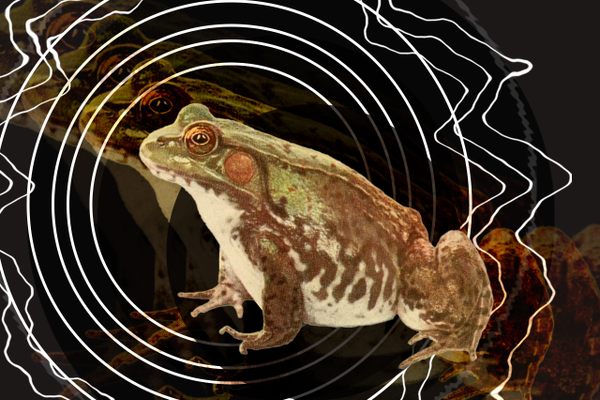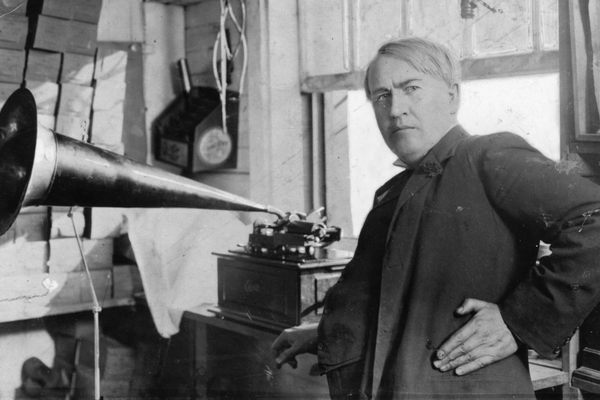Found: The Only Recording of Frida Kahlo’s Voice, Probably
In the recording, she likens Diego Rivera to a toad.

Somewhere along the winding cobblestone streets of the historic center in Coyoacán, Mexico City, there is a library devoted entirely to sound. The archives of the National Sound Library of Mexico—or Fonoteca Nacional—contain the obvious sorts of sounds: musical scores, concert performances, and sound art. But the library also preserves the voices of famous figures from Mexican history, people who may have died long ago but still speak through the reedy tape of a recorder. On June 12, 2019, the library announced it may have uncovered the only known recording of one of Mexico’s most beloved, iconoclastic residents, Frida Kahlo, according the AP.
The 90-second recording, which can be heard here, captures an unidentified woman with a soft, melodious voice describing Diego Rivera, the Mexican painter and Kahlo’s husband. The woman reads from Kahlo’s essay “Portrait of Diego,” published in a catalogue of a 1949 exhibition at the Palace of Fine Arts celebrating Rivera’s lifetime of work. “He is a huge, immense child, with a friendly face and a sad gaze,” the woman in the recording says. “His high, dark, extremely intelligent and big eyes rarely hold still. They almost pop out of their sockets because of their swollen and protuberant eyelids—like a toad’s.” The voice continues to characterize Rivera in a ruthless kind of fondness, noting his “meaty lips” and likening his “childish, narrow, rounded shoulders” to “an inscrutable monster,” according to The New York Times.

The recording, taken on open reel tape, was unearthed in a private collection of the late Mexican radio personality Alvaro “El Bachiller” Galvez y Fuentes, taken from a pilot episode of his 1955 radio show El Bachiller. The clip introduces the speaker as a female painter “who no longer exists,” which the library’s researchers believe could be a nod to the fact that Kahlo died in 1954. They estimate the recording was made in the last years of Kahlo’s life.
Meanwhile, the library’s researchers will investigate the recording to say for certain whether it is of Kahlo. They plan to listen to the remaining 1,300 tapes in the El Bachiller collection, speak to living sources, and consult audio experts, according to the AP. A recent analysis of the sound waves in the recording prove the speaker was not a professional announcer, as she audibly lisps and you can hear when she takes a breath, Pável Granados, the director of the library, told NBC News. He added that Guadalupe Rivera Marín, the granddaughter of Diego Rivera, says she recognizes the recording as Kahlo. But Esteban Volkov, the grandson of León Trotsky, who carried on a tumultuous affair with Kahlo, isn’t convinced, according to NBC News.
The National Sound Library is housed in the historic Casa Alvarado, built in the 18th century under Andalusian and Moorish influence. In 2005, the house and its historic gardens were restored to their original colors and conditions, according to the Mexican government. For years, the two most requested voices at the library were Kahlo’s and that of Mexican Independence Hero Miguel Hidalgo y Costilla, according to El País. If you’re interested and happen to be in Mexico City, you can wander in the museum and hear Kahlo (probably) speak for herself.














Follow us on Twitter to get the latest on the world's hidden wonders.
Like us on Facebook to get the latest on the world's hidden wonders.
Follow us on Twitter Like us on Facebook